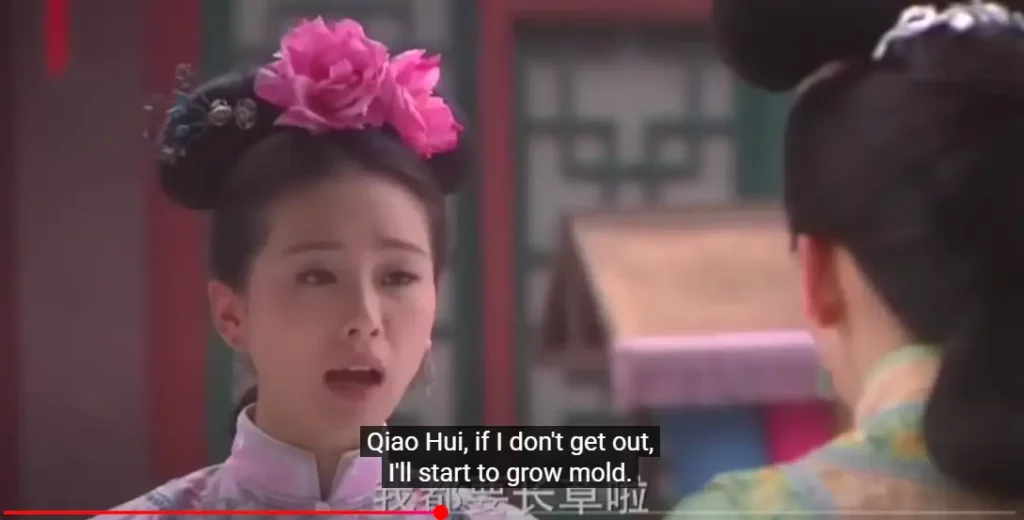In a world where films and TV shows transcend borders, subtitles have become the bridge between languages and cultures. For Chinese films and television to reach global audiences, accurate and culturally sensitive subtitles are essential. Effective translation ensures that viewers can enjoy the film’s emotional and cultural depth while maintaining the essence of the original dialogue.
Understanding the Art of Subtitling
Subtitling is a delicate art that combines language skills, cultural knowledge, and an understanding of the medium. While it may seem like a simple task of translating spoken words, subtitling involves much more. A good subtitle translator must accurately convey meaning, maintain the tone, and ensure that the subtitles fit the timing and space constraints of the screen. The challenge is to preserve the story and emotions of the original work without losing the essence of the characters and dialogue.
Read on to discover the nuances of subtitle translation, the common challenges, and how to effectively tackle them when working with Chinese films and TV.
READ MORE:Multilingual Captions and Subtitling Service
1. Cultural Sensitivity and the Importance of Contextualization

Cultural nuances play a significant role in translating subtitles for Chinese films. Language is deeply intertwined with culture, and Chinese films often feature regional dialects, proverbs, historical references, and even specific cultural expressions that may be difficult to translate directly. For example, Chinese phrases may use metaphors from nature or ancient history that would make little sense to an audience unfamiliar with these cultural references.
Cultural Sensitivity in Chinese Films
One of the challenges of subtitling Chinese films is ensuring that the original meaning is preserved while making it relatable to foreign audiences. Take, for instance, a Chinese proverb like “滴水穿石” (dī shuǐ chuān shí), which translates literally to “dripping water penetrates stone.” In English, this can be interpreted as “perseverance prevails” or “constant effort leads to success.” The translator must select the version that resonates best with the target culture while ensuring the original meaning is intact.
Addressing Cultural Context through Subtitles
Translators often make decisions that involve balancing literal translation with the need for contextual adaptation. For instance, certain terms in Chinese, such as “老师” (lǎoshī), meaning “teacher,” may need to be translated differently depending on context. A “teacher” could be a school instructor, a spiritual leader, or even a mentor figure in different contexts. When translating subtitles, the translator must assess the context of the dialogue and choose the appropriate term.
In addition, Chinese films may refer to historical figures, ancient dynasties, or religious symbols that may be unfamiliar to foreign viewers. When these references are integral to the plot, they should be explained or replaced with equivalent references in the target language, if possible. For example, references to Confucianism or traditional Chinese medicine may require a brief explanation or a suitable equivalent that aligns with the audience’s knowledge and cultural understanding.
2. The Challenge of Tone and Emotion in Subtitles
A significant aspect of Chinese films is the emotional depth conveyed through dialogue, body language, and tone. Subtitling this emotional weight without losing its impact is crucial. Chinese dialogue often relies on subtle tonal differences to express emotions, which can be particularly difficult to convey in subtitles.
Tonal Sensitivity in Chinese Films
In Mandarin Chinese, tone plays a critical role in distinguishing meaning. A word like “ma” can change its meaning based on its tone—”妈” (mā) means “mother,” “马” (mǎ) means “horse,” and “骂” (mà) means “to scold.” This tonal variation is often vital for expressing emotion, sarcasm, or humor.
Translating these tonal distinctions in a subtitle format can be challenging. For example, when a character in a Chinese drama uses a sarcastic tone, it’s not just the words that need to be translated, but also the emotional subtext. In this case, the translator may need to adjust the dialogue or insert a slight change in phrasing to make the sarcasm clear without altering the character’s intent. For instance, a simple sarcastic remark like “Really?” in Chinese could become “Seriously?” in English to preserve the humor or irony.
Subtitling for Emotion

While words are essential, the emotional tone of the delivery is equally crucial. In dramatic moments, the tone of voice can communicate sadness, anger, joy, or frustration. Subtitles must reflect these emotional shifts as closely as possible while keeping the timing and rhythm intact. A subtitle that reads too plainly or is too literal may fail to convey the emotional weight of the moment, diminishing the impact for the viewer.
In cases where the tone is hard to translate, many subtitlers will use additional visual cues. For example, in a scene where the character is tearful or angry, the subtitle may reflect the underlying emotion with words that carry emotional weight, such as “I can’t believe you did this” instead of a more neutral translation. The translator may also rely on cues from the actors’ performances to enhance the accuracy of the emotion conveyed in the subtitles.
3. Time and Length Limits
Subtitles are inherently limited by time and space. Unlike a written translation, subtitles must fit within the time that the dialogue is spoken and be readable on screen. This presents several challenges when translating Chinese films, especially when there is a lot of dialogue packed into a short amount of time or when the language used is more verbose than the target language.
Managing Time and Space in Subtitles
In Chinese, sentences tend to be shorter and more concise than in English. As a result, a direct translation might exceed the space available for subtitles, potentially leading to information overload for the viewer. For example, a line in Chinese like “你想不想见我一面?” (nǐ xiǎng bù xiǎng jiàn wǒ yī miàn?) could be translated into English as “Would you like to see me for a moment?” The sentence is longer in English, and fitting this into the time available for the subtitle could be a challenge.
To overcome this issue, subtitlers often condense the dialogue, removing filler words or phrases that don’t contribute significantly to the meaning. This process requires a delicate balance between preserving the essence of the message and maintaining readability. It is also important to ensure that the translation is grammatically correct and natural in the target language while ensuring that the meaning remains intact.
Syncing Dialogue with Subtitles
A key challenge in subtitling is syncing the dialogue with the on-screen action. The speed at which a character speaks can vary significantly across languages. Chinese tends to have a faster rhythm due to its concise nature, while English dialogue may take longer to express the same ideas. This can be problematic when a scene includes rapid-fire dialogue or multiple characters speaking simultaneously.
To address this, subtitle translators must carefully match the speed of the dialogue with the speed at which subtitles appear on the screen. Sometimes, subtitles need to be delayed or sped up to allow the audience enough time to read the text while not missing any crucial visual cues.
4. Translating Humor and Wordplay
Chinese films, like their Western counterparts, often contain humor, wordplay, and slang that can be particularly tricky to translate. Wordplay may involve puns or double meanings, which are often tied to the Chinese language’s rich history of homophones and characters with multiple meanings.
Translating Puns and Slang
For instance, in Chinese comedy, characters often use wordplay to create jokes. A simple pun, such as the word “猫” (māo), meaning “cat,” may sound similar to “毛” (máo), meaning “fur,” and the two can be used humorously in the right context. A literal translation of these words may lose the humor or cause confusion, requiring the subtitler to adapt the joke in a way that will resonate with the target audience.
Slang terms also present a challenge, as they may be specific to a region or time period. A term used by younger Chinese characters may be unfamiliar to older viewers, let alone viewers in another language. In these cases, subtitlers may choose to use equivalent slang terms from the target language, ensuring that the humor still lands with the audience.
Conveying Humor Across Cultures
Humor often depends on cultural references, and what is funny in one culture may not be in another. When translating humor for Chinese films, the subtitler needs to consider how the joke will land with the target audience. This is especially true when translating for languages with vastly different structures, such as English, where the joke may not be as effective without modification. Adapting the joke without altering the character’s intentions is the key challenge here.
“Lost on Journey” – Humor in Family Dynamics and Generational Gaps

Lost on Journey is a 2010 Chinese comedy that focuses on the misadventures of a father and son as they travel home for the Chinese New Year. Much of the humor arises from the generational gap between the characters, where the father’s traditional, old-fashioned ways clash with his son’s modern, more laid-back attitude. For example, the father constantly says, “别惹我” (bié rě wǒ), meaning “Don’t mess with me,” in a gruff, intimidating tone.
In the context of Chinese society, this phrase may evoke humor based on the father’s gruff demeanor and the way he tries to control the situation. However, when subtitling this for a Western audience, the challenge is to maintain the humor of the father’s rigidness without making the character seem overly harsh or outdated. The subtitle could be adapted as “Don’t push your luck,” which conveys the idea of an older, authoritarian figure attempting to assert dominance in a humorous way while maintaining the character’s personality.-write subheading
🔎Examples of Excellent Chinese-English Subtitle Translations (Learn from Them)
1. “Crouching Tiger, Hidden Dragon” (卧虎藏龙)
2. “The Farewell” (别告诉她)
3. “The Wandering Earth” (流浪地球)
4. “The Great Wall” (长城)
5. “In the Mood for Love” (花样年华)
5. The Role of Technology in Subtitling
Technology has become an essential part of subtitle translation. With the rise of machine translation tools and AI-powered subtitling software, the subtitling process has become faster and more efficient. However, while these tools can help with basic translations, they still require human intervention to ensure accuracy and cultural sensitivity
Machine Translation and AI in Subtitling
Machine translation tools like Google Translate or AI subtitling software can offer a first draft of subtitles quickly. These tools can handle repetitive phrases or simpler lines of dialogue, but they still struggle with complex language, cultural nuances, and emotional tone. Human subtitlers are needed to refine the translations, ensuring that they are accurate, culturally appropriate, and emotionally impactful.
Additionally, subtitling software allows for more precise synchronization of subtitles with the audio, making it easier to manage timing and space constraints. However, these tools still require careful oversight to ensure the translations meet the desired standards for quality.
Translating subtitles for Chinese films and TV is an intricate task that requires a blend of linguistic skill, cultural understanding, and technical expertise. By addressing cultural differences, managing timing and space constraints, and accurately conveying tone, emotion, and humor, subtitlers can create translations that allow global audiences to enjoy the richness of Chinese cinema. As technology continues to evolve, the future of subtitling will undoubtedly become more efficient, but the human touch will always be essential for capturing the depth and nuance of the original work.
Our team can help you with professional and culturally sensitive subtitle translations, ensuring that your Chinese films and TV shows are accurately represented for international audiences. With expertise in both linguistic precision and cultural adaptation, we make sure that the tone, humor, and emotional resonance of your content remain intact across all languages.
